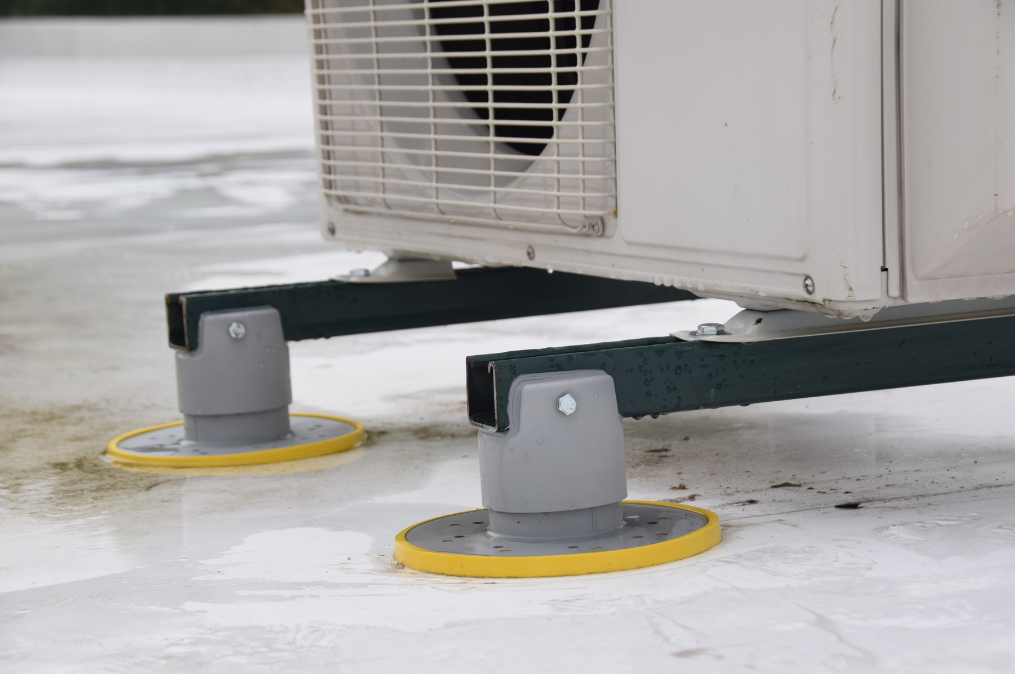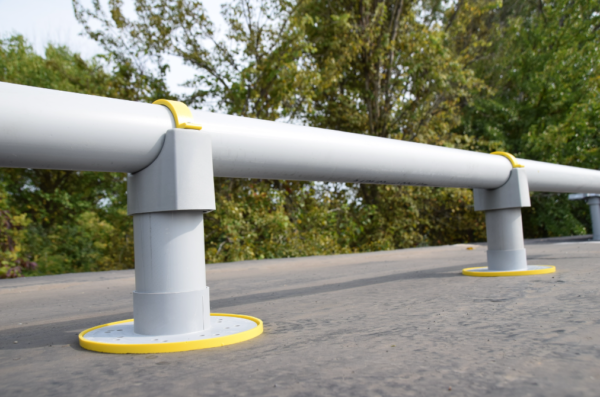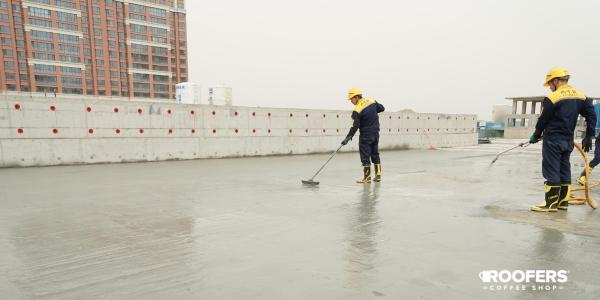Elevating and Leveling Rooftop-Mounted Equipment

By GREEN LINK Engineering.
Elevating and leveling roof-installed pipelines and HVAC equipment are more important than may appear at first glance.
There are two issues: First, pipes, equipment or electrical conduit need to be elevated to a point where debris, sticks and leaves, snow and ice cannot be trapped underneath causing a dam that will lead to ponding water.
Second, and perhaps the most difficult challenge, is ensuring that HVAC equipment such as air conditioning units is perfectly level to avoid mechanical stress.
In the first case, it’s easy to elevate KnuckleHeads to the required height by using extensions. GREEN LINK offers 8”, 12” and 18” PVC pipe extensions that contain a 3/8” threaded rod for attachment to the base and head. Extensions can also be custom cut to fit. As noted below, rotation of the heads offers an approximately 1” range of up-or-down adjustment for “fine tuning” height.
The second issue relates to ensuring that rooftop mounted equipment remains as close to level as possible. A typical commercial “flat roof” is sloped for drainage. But that slope can affect equipment performance. Air conditioning units, for example, require that refrigerant flow through the coils evenly. An off-level unit will not operate at maximum efficiency. Further, a unit that is even slightly angled will negatively impact the compressor and/or fan bearings, by mechanically stressing the rotating elements over time.
Wood sleepers or rubber blocks may be cut or molded to the desired height, but that doesn’t necessarily translate to a level unit because of irregularities in both the supports and the roof itself. Quite often, sleepers or blocks are all the same dimension, so the AC unit will tilt at the slope of the roof. This is where engineered KnuckleHead supports deliver an important benefit. Height can be adjusted simply by rotating the heads. The typical range is about 1”—clockwise lowers height, counter clockwise increases height. A contractor who has mounted an air conditioning unit can make easy field adjustments to attain a perfectly level installation. In addition, the contractor can also properly slope condensation lines so there is no impediment to drainage.
KnuckleHeads provide many advantages in terms of durability, weathering, load bearing capabilities, and installation options. But the ability to modify height is a critical attribute that can be overlooked, but one that can extend the life of rooftop mounted equipment. KnuckleHeads are known to extend the life of the roof—but they can also extend the life of rooftop- mounted equipment.
Refrigerant needs to flow through the coils evenly without too much interference from the slope of the unit. A level concrete slab with rubber pads between the unit and the concrete is what the manufacturers recommend. “Mostly level” is probably okay for a residential unit. Get a half-inch thick outdoor rubber mat and cut it into 6″x 6″ squares. Put single pieces on the high side and stack several pieces under the low side to bring the unit closer to level. Be careful not to kink or damage the refrigerant piping to the unit when you do that. If you damage the lines when you raise the unit to insert the pads, you will wish you had left it alone.
It should be as level as possible. Previous information from these posts also generate ambiguity over the importance of having the unit level in regards to the compressor. Leveling the unit will terminate any ambiguity. An additional concern not previously addressed is the compressor and/or fan bearings. An off-level unit will put additional unintended mechanical stress/strain on these rotating components long-term. Therefore, for best performance and longevity of your unit, level it and take special precautions in the process.
Learn more at www.greenlinkengineering.com
Green Link is an innovative engineering company that develops and produces polymeric architectural products for the construction industry including specialized markets such as controlled environments. Green Link is committed to processes and products that cause no harm to the environment or human life.
























Comments
Leave a Reply
Have an account? Login to leave a comment!
Sign In